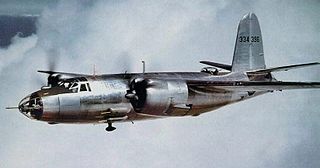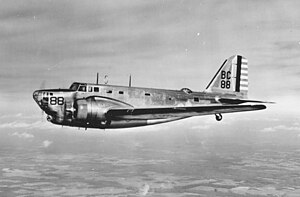
The 540th Combat Crew Replacement Wing is an inactive United States Air Force unit. It was last active in 1946 at Colorado Springs, assigned to Continental Air Forces.

The V Fighter Command is a disbanded United States Air Force headquarters. It was established as the 2nd Interceptor Command in June 1941, with responsibility for air defense of the northwest United States and training fighter units in its area of responsibility. Shortly after the attack on Pearl Harbor, the Army formed Western Defense Command, with responsibility for the entire Pacific coast. All air defense functions were transferred to 4th Interceptor Command, and the command was slated for transfer to the Southwest Pacific Theater as 5th Fighter Command.

The Trinidad Wing, Antilles Air Command is an inactive United States Air Force unit. Its last assignment was with Antilles Air Command at Waller Field, Trinidad. It was disbanded on 15 March 1944.

The III Bomber Command is a disbanded United States Air Force headquarters. It was established in September 1941, shortly before the attack on Pearl Harbor to command bomber units assigned to 3rd Air Force. Following the entry of the United States into World War II, it flew patrols off the south Atlantic and Gulf coasts. However, its main efforts soon began organizing and training medium bomber units and aircrews. Its last assignment was with Third Air Force at MacDill Field, Florida. It was inactivated on 8 April 1946 and disbanded in October 1948.

The III Fighter Command is an inactive United States Air Force unit. Its last assignment was at MacDill Field, Florida. It was inactivated on 8 April 1946.

The III Reconnaissance Command is a disbanded United States Army Air Forces unit. Its last assignment was with Third Air Force stationed at Rapid City Army Air Base, South Dakota, where it was inactivated on 8 April 1946. After transferring to the United States Air Force in September 1947, it was disbanded in October 1948.

The III Tactical Air Command was a United States Army Air Forces formation. Its last assignment was with Third Air Force stationed at Barksdale Field, Louisiana. It was disbanded on 24 October 1945. The command was established in 1941 as the 3rd Air Support Command. It was responsible for training tactical units and aircrews for the Army Air Forces, except for the period from August 1943 through March 1944, when it specialized in training reconnaissance units.
The 15th Bombardment Training Wing is a disbanded United States Air Force unit. Its last assignment was with Second Air Force, at Colorado Springs Army Air Base, Colorado, where it was inactivated on 9 April 1946.

I Fighter Command was a United States Army Air Forces intermediate command responsible for command and control of the fighter operations within the First Air Force during World War II. It was initially established in June 1941 as the 1st Interceptor Command to provide air defense of the Northeastern United States. Following the attack on Pearl Harbor, the command's area of responsibility extended over the entire Atlantic coast and into Canada and Iceland. As the perceived threat of attack decreased, the command's responsibnility for training units and aircrews became its primary mission. The command continued its mission until March 1946, when it was inactivated.
The II Air Support Command is an inactive United States Air Force unit. It was last assigned to Third Air Force at Biggs Field, Texas, as the II Tactical Air Division, where it was inactivated on 22 December 1945.

The II Bomber Command is a disbanded United States Air Force unit. It was established in September 1941, shortly before the attack on Pearl Harbor to command heavy bomber units assigned to Second Air Force. Following the entry of the United States into World War II, it flew patrols off the northwest Pacific coast. However, its main efforts soon began organizing and training heavy bomber units and aircrews. By 1943, the command had become the only command under Second Air Force conducting operational training, and on 6 October 1943 it was disbanded as redundant and its functions absorbed by Second Air Force or transferred to the bomber commands of the other continental air forces.

The I Tactical Air Division is an inactive United States Air Force unit. It was last assigned to Second Air Force, based at Biggs Field, Texas. It was inactivated on 22 December 1945.

The IV Bomber Command is a disbanded United States Air Force headquarters. It was established in September 1941, shortly before the attack on Pearl Harbor to command bomber units assigned to 4th Air Force. Following the entry of the United States into World War II, it flew patrols off the Pacific coast. However, its main efforts soon began organizing and training bomber units and aircrews. It was disbanded at San Francisco, California on 31 March 1944.

The IV Fighter Command is a disbanded United States Air Force unit. It was activated under Fourth Air Force at March Field, California in June 1941, when it replaced a provisional organization. It was responsible for training fighter units and for the air defense of the southern portion of the Pacific Coast. Following the attack on Pearl Harbor, the command's units were placed on alert. In 1942, its air defense responsibility was expanded to include the entire Pacific coast of the continental United States and the command moved its headquarters from southern California to Oakland Airport, California, which was more centrally located. As the threat to the Pacific decreased, it was disbanded on 31 March 1944.

The Second Bombardment Wing, abbreviated both as 2d Bombardment Wing and 2nd Bombardment Wing, of the United States Army Air Forces is a disbanded unit whose last assignment was with the Continental Air Forces, based at McChord Field, Washington. It was last active in November 1945.
The 20th Bombardment Wing is a disbanded United States Air Force unit. Its last assignment was with Eighth Air Force at MacDill Field, Florida, where it was inactivated on 10 November 1946. It was later disbanded in October 1948

The XII Tactical Air Command was a formation of the United States Army Air Forces. Its last assignment was with the United States Air Forces in Europe at Bad Kissingen, Germany, where it was inactivated on 10 November 1947.

XII Bomber Command is an inactive United States Army Air Forces formation. Its last assignment was with the Twelfth Air Force, based in Corsica, France. It was constituted on 26 February 1942, activated on 13 March 1942, and inactivated on 10 June 1944.

The VIII Air Support Command is a disbanded United States Army Air Forces unit. It was assigned to Eighth Air Force throughout its existence, and it was last stationed at Sunninghill Park, England, where it was disbanded on 1 December 1943.

The I Bomber Command was an intermediate command of the Army Air Forces during World War II. It trained bombardment units and aircrews for deployment to combat theaters. From shortly after the attack on Pearl Harbor until its assets were transferred to Army Air Forces Antisubmarine Command in October 1942, it conducted antisubmarine warfare off the Atlantic and Gulf coasts of the United States.



















